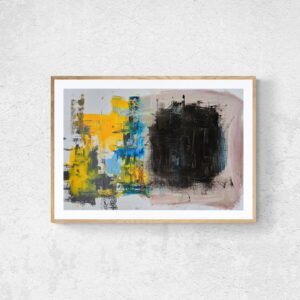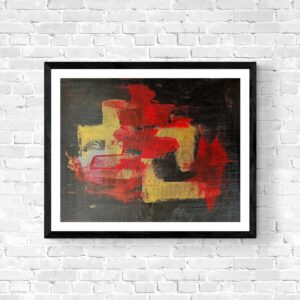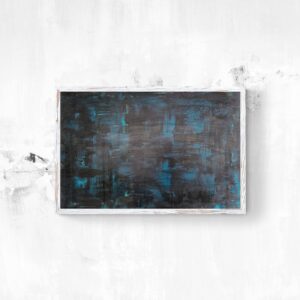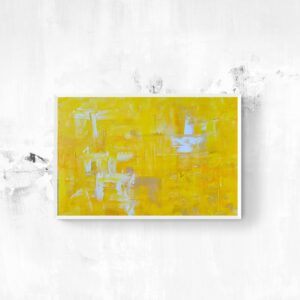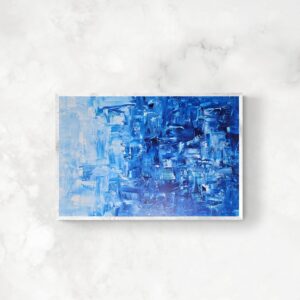
CHICAGO — Experts are warning that Chicago is heading towards a hotter-than-usual summer. And while I’m no climatologist — just an art historian — I can tell you one thing: The city’s already simmering like a pressure cooker. With oppressive political tensions, major public transport cuts looming, a steadily rising cost of living, and relentless heat waves, Chicagoans are hungry to celebrate what makes their city special and imagine futures beyond its current struggles.
Serendipitously, several exhibitions on view right now observe Chicago’s roots. The Intuit Art Museum uplifts outsider art created by the city’s vibrant immigrant community, the Chicago History Museum inspires change through historic protest art, and the Logan Center preserves the South Side’s familial memories. Others turn towards cultures woven tightly into the fabric of the city, like the affirmations of queer existence at Wrightwood 659 and the Museum of Contemporary Art Chicago, or the exploration of African diasporic traditions at Mariane Ibrahim Gallery. No matter what you see, you’ll leave refreshed, equipped with a stronger sense of belonging or a renewed belief in the possibility of change.
Designing for Change: Chicago Protest Art of the 1960s–70s
Chicago History Museum, 1601 North Clark Street, Chicago, Illinois
Through November 2

With its powerful selection of original protest media, Designing for Change brings the lived realities and dreams of changemakers to the forefront. Art is an immediate and visceral way to track the history of past social movements: Hand-crafted and lived-in, artifacts in the show collapse the distance between museum viewer and protester, their bright colors and bold texts still charged with the same emotion after 40 years. Above an afro pick bearing the colors of the pan-African flag, buttons worn by activists proudly read “Black Power” and “Study and Struggle for Black Liberation.” With film photographs of demonstrations for converging causes, it’s not hard to imagine the objects in the hands of those who made and utilized them, or to be inspired to take up Chicago’s mantle of resistance.
Raqib Shaw: Paradise Lost
The Art Institute of Chicago, 111 South Michigan Avenue, Chicago, Illinois
Through January 19

The richness of Raqib Shaw’s painting cannot be overstated. Impossibly detailed through a meticulous method of intricate acrylic lining followed by the injection of enamel paints, Shaw’s 100-foot-wide Paradise Lost (2009–2025) gleams, humming with the magic of its materiality and epic story. The behemoth composition tackles its biblical source material with an autobiographical spin, moving through the artist’s life in Kashmir and the London art world and ending with a tragic yet liberating rebirth. An encounter with the work is certainly formidable, but through close attention, a space for contemplation of shared histories and distant sanctuaries emerges.
The First Homosexuals: The Birth of a New Identity, 1869–1939
Wrightwood 659, 659 West Wrightwood Avenue, Chicago, Illinois
Through August 2

If you manage to snag a ticket to this monumental show, expect a history lesson rolled into a resounding affirmation of queerness. Over the course of more than three hundred works, the exhibition examines the development of sexuality as a core facet of identity, beginning with the genesis of the term “homosexual” in 19th-century Germany. The art on view proves the inadequacy of language or categories to capture the totality of LGBTQ+ existence, and how representation recovers what slips through — like the languid morning-after intimacy of young lovers in an 1894 Andreas Andersen oil painting, or the fierce love of intergenerational queer relationships, as with James Baldwin and Beauford Delaney.
Huguette Caland: Bribes de corps
The Arts Club of Chicago, 201 East Ontario Street, Chicago, Illinois
Through August 2

In ways that are both comforting and alien, like the first touch of a new lover, works by Lebanese artist Huguette Caland linger on the moments bodies meet each other and fold in on themselves. The selection of Caland’s work up at the Arts Club comes from the 1970s, when the artist was residing in Paris and closely considering her own body through her practice. The universal experience of the dual awkwardness and sensuality of our physical selves makes her bulbous protrusions in a charming array of landscape-adjacent colors decidedly familiar, and particularly worth viewing in the summer, when all manner of body bits are exposed and caressed.
Christina Fernandez: Multiple Exposures
DePaul Art Museum, 935 West Fullerton Avenue, Chicago, Illinois
Through August 3

Christina Fernandez’s landmark survey highlights 30 years of her socially engaged photographic practice. Her bodies of work activate the many dimensions of her experience as a Chicana artist growing up in Los Angeles, from labor histories to daily walks around El Sereno. Distinct projects are united by Fernandez’s ability to turn a piercing gaze towards everyday subject matter. One series, Lavanderia (2002–3), peers into laundromat facades from the Eastside, revealing their worn architecture and tired clientele; another, Manuela S-T-I-T-C-H-E-D (1996–2000), fixates on the exteriors of garment factories in Los Angeles, raising questions about the working conditions in their interiors.
Into the Hourglass: Paño Arte from the Rudy Padilla Collection
National Museum of Mexican Art, 1852 West 19th Street, Chicago, Illinois
Through August 10

Into the Hourglass presents an incredible collection of paños — intricate pen or pencil drawings completed on handkerchiefs, pillowcases, and sheets — and paño-inspired art. Originally created by incarcerated Chicanos, paños are a testament to the innovative ways these artists cultivate creative lives and craft visual languages that reflect their cultural heritage, religious traditions, and lived realities. Paños are also a somber reminder of the harm caused by incarceration. Art becomes a means of survival under these conditions. Accompanying the detailed paños, a quote from an unidentified incarcerated artist reads: “You are inspired to do art that can transcend the feeling of the heart and soul.”
Thus masked, the world has a language
Mariane Ibrahim Gallery, 437 North Paulina Street, Chicago, Illinois
Through August 23

Countless spirits, traditions, memories, and truths are alive in the air between the works in Thus masked, the world has a language. Each of the nine pieces in the exhibition engages in layered dialogue with African diasporic mask and masquerade traditions, ranging from Afro-Mexican rituals to hand-carved Guro masks. Collage and assemblage are frequent techniques. Artists Raphaël Barontini, Nick Cave, and Tavares Strachan draw from archives, symbology, and texture to stitch together past and present. The tension between concealment and visibility between these layers and behind these masks is potent, creating room for embodiment, transformation, and imagination.
City in a Garden: Queer Art and Activism in Chicago
Museum of Contemporary Art Chicago, 220 East Chicago Avenue, Chicago, Illinois
Through May 31

Chicago’s official motto, Urbs in Horto, translates to “city in a garden,” and originated as an ambitious declaration of the city’s somewhat unfulfilled commitment to surrounding itself with vast open parklands. This eponymous exhibition reinterprets the slogan to represent the utopian imaginations of Chicago artists and activists that emerged in the mid-1980s amid the United States government’s mishandling of the AIDS epidemic, tracking queer art history and existence. As City in a Garden unequivocally proves, Chicago is a pivotal site in the ongoing struggle for queer liberation, with visions, acts of resistance, and voices worth paying attention to.
Catalyst: Im/migration and Self-Taught Art in Chicago
Intuit Art Museum, 756 North Milwaukee Avenue, Chicago, Illinois
Through January 11

The city of Chicago would not exist as it does today without two things: immigration and self-taught art. Catalyst shines a spotlight on the intersection between artistic production and human geography, revealing that the forces pushing communities to relocate to Chicago and pursue creative practices are closely intertwined. An abundance of playful, energetic, and deeply personal works contextualized by the biographies of the artists who created them provides a diverse cross-section of the cultural influences shaping the city. A perfect example: North Korean-born artist and community member Thomas Kong owned and operated Kim’s Corner Foods in Rogers Park every day for 17 years, developing a collage practice using spare cardboard and wrappers from the store’s wares.
The Act of Recording is an Act of Love: The South Side Home Movie Project
Reva and David Logan Center for the Arts, 915 East 60th Street, Chicago, Illinois
Through August 24

This exhibition celebrates two decades of the South Side Home Movie Project (SSHMP), an initiative dedicated to finding and preserving home movies recorded on the South Side of Chicago from the 1920s to the 1980s. Led by University of Chicago Department of Cinema and Media Studies Professor Jacqueline Stewart, the project connected with the neighborhood’s residents, recovered their films, and created extensive archives utilizing community tagging tools. For the duration of the show, the SSHMP is presenting highlights from one home movie collection each day — when I went, the Lynette Frazier Collection was on view, featuring clips of the aftermath of the uprising following Martin Luther King Jr.’s assassination and the 1964 World’s Fair in New York.

